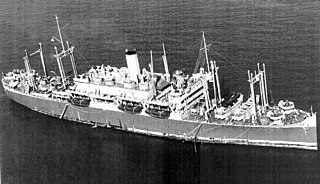USS Nautilus may refer to:
Five ships of the United States Navy have been named USS Idaho in honor of the 43rd state.
USS Cleveland may refer to:
Four United States Navy ships have borne the name USS Houston, after the city of Houston, Texas.
Three ships of the United States Navy have been named USS San Jacinto, after the Texas battle of San Jacinto in 1836, and the navy considered acquiring a fourth ship of the name:

The New York Shipbuilding Corporation was an American shipbuilding company that operated from 1899 to 1968, ultimately completing more than 500 vessels for the U.S. Navy, the United States Merchant Marine, the United States Coast Guard, and other maritime concerns. At its peak during World War II, NYSB was the largest and most productive shipyard in the world. Its best-known vessels include the destroyer USS Reuben James (DD-245), the cruiser USS Indianapolis (CA-35), the aircraft carrier USS Kitty Hawk (CV-63), the nuclear-powered cargo ship NS Savannah, and a quartet of cargo-passenger liners nicknamed the Four Aces.
USS Montpelier may refer to:
USS Monticello may refer to the following ships of the United States Navy:

USS Joseph Hewes (AP-50/APA-22), formerly SS Excalibur, was a troop transport for the United States Navy during World War II commanded by Captain Robert McLanhan Smith Jr. A part of the Center Attack Group of Admiral Hewitt's Western Naval Task Force, Operation Torch, Joseph Hewes was sunk on November 11, 1942 by the German submarine U-173 in Fedala Roads off French Morocco coast during the Naval Battle of Casablanca.

USS Hugh L. Scott (AP-43) was a Hugh L. Scott-class transport ship. She was built in 1921 and spent 20 years in merchant service as a passenger and cargo liner. In July 1941 the ship was delivered to the United States Department of War for Army service as the United States Army Transport Hugh L. Scott operating in the Pacific. In August 1942 the ship was transferred to the United States Navy for conversion to an attack transport, served as a troopship in Operation Torch in November 1942, and was sunk by a U-boat four days later. 59 crewmen and soldiers died during the sinking.

SS President Cleveland was originally built as Golden State for the United States Shipping Board (USSB), one of the planned World War I troop transports converted before construction into passenger and cargo vessels launched as Emergency Fleet Corporation Design 1029 ships first known, along with the smaller Design 1095 versions, in the trade as "State" ships due to names assigned for the nicknames of states and later as "535s" for their length overall. Almost all ships of both designs were renamed for United States presidents by May 1921, with Golden State being renamed President Cleveland. As one of the USSB-owned ships operated by agents of the board, President Cleveland was allocated to and operated by the Pacific Mail Steamship Company until sold by the USSB to the Dollar Steamship Line in 1925. After the demise of that line and creation of a new, replacement line, American President Lines, the ship remained with that line until government acquisition for the Second World War.

USS General T. H. Bliss (AP-131) was a General G. O. Squier-class transport ship for the U.S. Navy in World War II. She was named in honor of U.S. Army general Tasker Howard Bliss. Decommissioned in 1946, she was sold privately in 1964 and renamed SS Seamar, and was scrapped in 1979.
SS William R. Cox may refer to one of three American Liberty ships named in honor of Civil War General William Ruffin Cox:

The Type C4-class ship were the largest cargo ships built by the United States Maritime Commission (MARCOM) during World War II. The design was originally developed for the American-Hawaiian Lines in 1941, but in late 1941 the plans were taken over by the MARCOM.
USS Johnson may refer to various United States Navy ships:

SS President Cleveland was an American steam passenger ship that operated from 1947 to 1973. She became the Panamanian-flag passenger ship SS Oriental President in 1973 before being scrapped in 1974. She operated on routes in the Pacific Ocean.

SS President Wilson was an American passenger ship originally ordered by the Maritime Commission during World War II, as one of the Admiral W. S. Benson-class Type P2-SE2-R1 transport ships, and intended to be named USS Admiral F.B. Upham (AP-128), but she was launched just after the war ended. in 1948, The ship was put into service for the American President Lines. The ship remained in service for the shipping company until 1973. She was sold to Oceanic Cruise Development before eventually, scrapped at Kaohsiung.

SS Frontenac Victory was a Victory ship built for the United States War Shipping Administration late in World War II under the Emergency Shipbuilding program. It saw service in the European Theater of Operations in the Atlantic Ocean during 1945, and in the immediate post-war period. SS Frontenac Victory was part of the series of Victory ships named after cities; this particular ship was named after the city of Frontenac, Missouri. It was a type VC2-S-AP2/WSAT cargo ship with the U.S. Maritime Commission (MARCOM), "Victory" (MCV) hull number 625, shipyard number 1597, and built by Bethlehem Shipbuilding Corporation in Baltimore, Maryland.
This page is based on this
Wikipedia article Text is available under the
CC BY-SA 4.0 license; additional terms may apply.
Images, videos and audio are available under their respective licenses.







